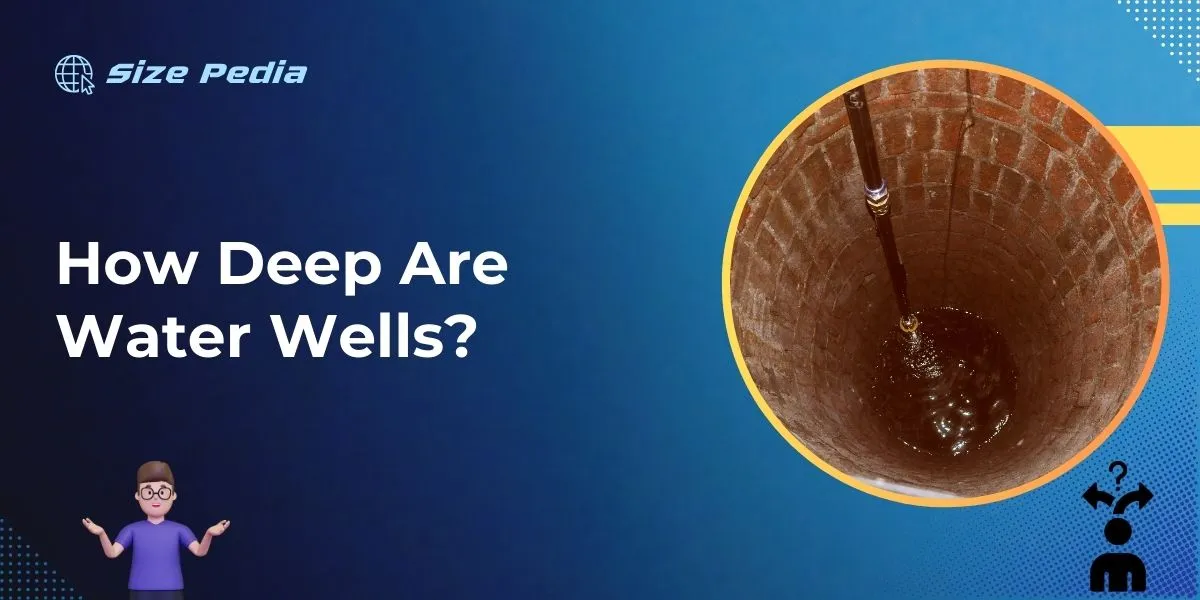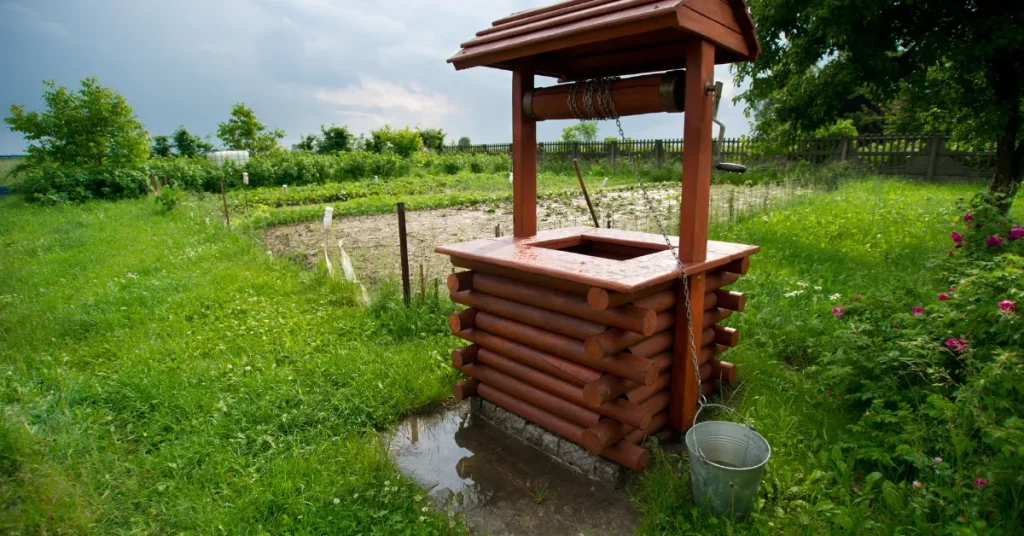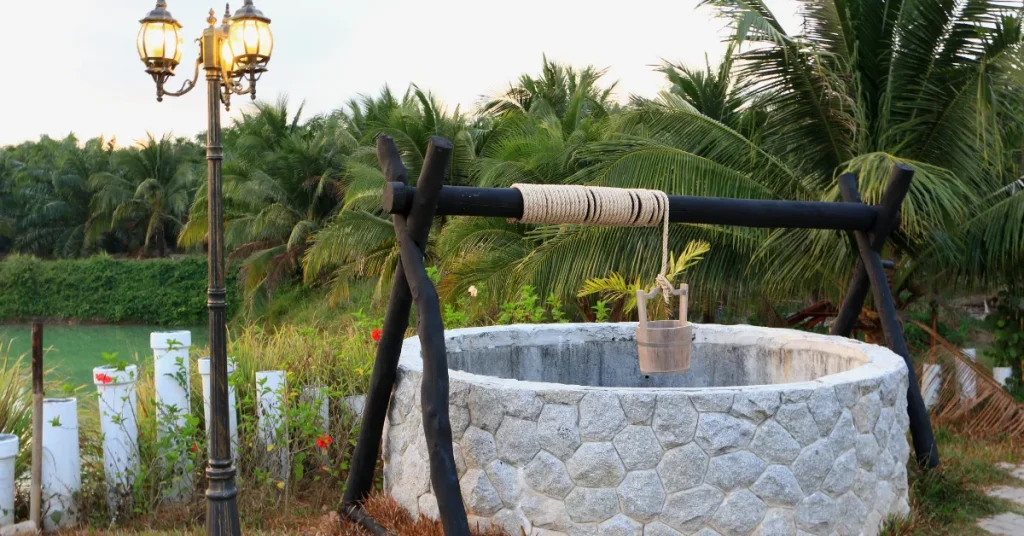Water wells vary in depth from about 30 to over 1,000 feet. Most residential wells are between 100 and 500 feet deep.
Drilling a water well taps into underground aquifers to supply water for homes, agriculture, and industries.
The specific depth of a water well depends on numerous factors, including the geological formation of the area, the level at which groundwater is found, and the intended use of the water.
Homeowners typically need a well that reaches deep enough to access a reliable water table, which can fluctuate based on local conditions and seasonal changes.
It’s essential to conduct thorough research or consult with a professional to determine the appropriate depth for a sustainable and contaminant-free water supply.
Proper well construction and maintenance are critical for ensuring a safe water source and preventing environmental contamination.

The Essence Of Water Wells
Water wells tap into underground aquifers to bring vital water to the surface. As crucial structures, they provide accessible, reliable water for various needs. Their depth can vary depending on many factors.
A Brief History
Historically, water wells were hand-dug, reaching depths where water was found. Mechanical drilling technology now allows deeper wells, reaching aquifers below.
- Hand Digging: Shallow, labor-intensive, used for centuries.
- Mechanical Drills: Create deeper and more reliable wells.
- Stone Rings: Early wells lined with stone to prevent collapse.
Modern Uses And Significance
Today, water wells serve critical roles, enumerated below:
- Drinking Water: Primary source for many communities.
- Agriculture: Irrigation ensures food production.
- Industry: Water is key in many industrial processes.
| Use | Significance |
| Residential | Safe access to water for homes |
| Commercial | Water for businesses and services |
| Environmental | Maintains natural habitats |
In conclusion, modern drilling techniques have revolutionized how we access water, making it safer and more efficient.
Types Of Water Wells

Understanding the diverse types of water wells is crucial for any homeowner or land developer. These wells vary not only in depth but also in their construction methods and the specific geological conditions they exploit.
Let’s explore the main types, which include shallow dug wells, deep drilled wells, and artesian wells.
Shallow Dug Wells
These are the simplest kind of wells. They are perfect for regions with high groundwater levels. Here are points to consider about shallow dug wells:
- Depth: Usually no deeper than 30 feet.
- Construction: Often built by hand and lined with stones or bricks to prevent collapse.
- Water Source: Close to the surface, making them susceptible to contamination.
Deep Drilled Wells
When a substantial depth is necessary to reach groundwater, deep drilled wells come into play. Important aspects include:
- Depth: Can extend from 100 to 500 feet or more.
- Technique: Created using drilling rigs which cut through the earth.
- Benefits: Deeper water tends to be cleaner and more reliable.
Artesian Wells
An artesian well taps into pressurized aquifers. Below are its characteristics:
- Pressure: Natural pressure forces the water upwards.
- Depth: Can vary greatly, typically deeper than shallow wells.
- Quality: Water is often pure, as the aquifer is enclosed by impermeable material.
Measuring The Depths
Peering into the earth to draw water, wells are a marvel of engineering and natural resources. Measuring their depths unlocks the story beneath our feet. Just how deep does the water lie?
Average Depths Explored
Wells vary broadly in how deep they plunge. This diversity reflects the unique geography of each location. Here’s a look at the common depths:
- Shallow Wells: Typically, range between 30 to 50 feet.
- Intermediate Wells: Often reach depths of 100 to 200 feet.
- Deep Wells: In certain regions, may extend beyond 1000 feet.
Factors Influencing Well Depth
Several aspects dictate the depth of a well. Crucially, the location’s geological profile plays a leading role. Other elements include:
- Groundwater Levels: Lower water tables call for deeper wells.
- Seasonal Variations: Fluctuating water availability affects depth.
- Water Quality: Seeking cleaner water can mean drilling further down.
- Consumption Needs: Higher water demand may necessitate deeper wells.
Methods Of Measurement
Determining the depth of a well demands precision. Specialists employ various techniques to measure this:
| Method | Description |
| Manual Sounding | Uses a weighted line dropped into the well until it hits water. |
| Sonic Equipment | Deploys sound waves that echo back from the water surface. |
| Laser Tools | Utilizes a laser to measure the distance to the water level. |
| Electronic Sensors | Electronic devices offer readings of water levels. |
Summing up, well depths differ based on numerous factors. By understanding average depths, examining the influencing conditions, and using appropriate measurement tools, one uncovers the key to sustainable groundwater access.
Technological Advances In Well Drilling
The quest to reach water deep beneath the surface has transformed dramatically with technological progress.
Advances in well drilling have not only enabled us to access deeper water sources, but have done so with remarkable efficiency and safety. This section delves into the cutting-edge methods reshaping the industry.
Innovations In Drilling Techniques
Recent breakthroughs in drilling techniques have revolutionized how we tap into underground water reserves. These innovations include:
- Directional drilling, which allows for precise well placement.
- Rotary steerable systems (RSS) that enhance drilling speed and control.
- Real-time data monitoring equipment to make instant decisions.
Such advancements not only increase the depth we can reach but also minimize the environmental impact.
Enhanced Safety Measures
The safety of drilling operations has seen a significant boost with new technology implementations. Key enhancements include:
- Automated drilling rigs reduce human error and protect workers.
- Blowout preventers (BOPs), which are critical for controlling well pressure and preventing mishaps.
- High-tech sensors monitor conditions to predict and prevent accidents.
These safety measures ensure that drilling for water wells is both secure for crews and sustainable for the environment.
Environmental Impact And Regulations

The digging of water wells goes beyond just quenching our thirst. It affects the planet too. Laws help keep our water and earth safe. Let’s dive into the worries about our underground water and the rules for making wells.
Aquifer Depletion Concerns
Aquifers are like underground lakes. When wells are too deep, they can take more water than rains can replace. This makes nearby rivers or lakes go dry. Farmers and animals can lose their water source. It’s a big problem that needs careful watching.
Legal Framework For Well Construction
Rules for building wells are very strict. They protect our water and land. You need a permit to dig. The well must stay a safe distance from any pollution.
And it must not harm the water’s health. These rules keep the water clean for everyone.
| State | Well Distance Rules | Permit Needed? |
| California | 100 feet from pollution | Yes |
| Texas | 50 feet from property lines | Yes |
| Florida | 75 feet from surface water | Yes |
- Every well needs a proper design.
- Inspectors check the site first.
- Builders have to follow safety steps.
Maintenance And Sustainability
Water wells are vital for clean water. Good Maintenance ensures they are safe and last long. Sustainability means using resources without running out. This part explains how to keep water wells working well for years.
Ensuring Long-term Water Quality
Keeping water clean is crucial. Here are key steps for quality maintenance:
- Regularly test water for harmful elements
- Clean and disinfect the well once a year
- Check for well parts that may need fixing
- Keep records of all tests and services done
Follow these steps, and your water will stay safe to drink!
Renewable Energy Integration
Using renewable energy helps the planet and your wallet. See how it fits with water wells:
- Solar panels can power well pumps
- Wind turbines also work for some wells
- Battery systems store energy for later use
These green options can keep water flowing with less harm to Earth.
FAQs About How Deep Are Water Wells
How Deep Does A Typical Water Well Reach?
A typical water well can range from 100 to 800 feet deep. However, depths vary based on geological conditions and the water table in the area.
What Factors Determine Water Well Depth?
Well depth is influenced by the location’s geology, water table, and intended use. Local regulations may also impact the necessary depth.
Can Water Wells Be Too Deep?
Wells can be excessively deep, making them costlier and reducing efficiency. Optimal depth ensures access to sufficient and potable groundwater.
What Is The Average Cost Of Drilling A Water Well?
The average cost of drilling a water well is $25 to $65 per foot. Final costs depend on depth, region, and drilling conditions.
Conclusion
Water wells vary greatly in depth, catering to diverse needs and geological conditions. Understanding these factors helps ensure safe, sustainable access to groundwater.
As you consider drilling a well, remember depth influences both quality and cost. Seek professional advice to optimize your well’s performance and longevity.
Stay informed, stay hydrated.
Resources:
1. https://www.epa.gov/privatewells/learn-about-private-water-wells
